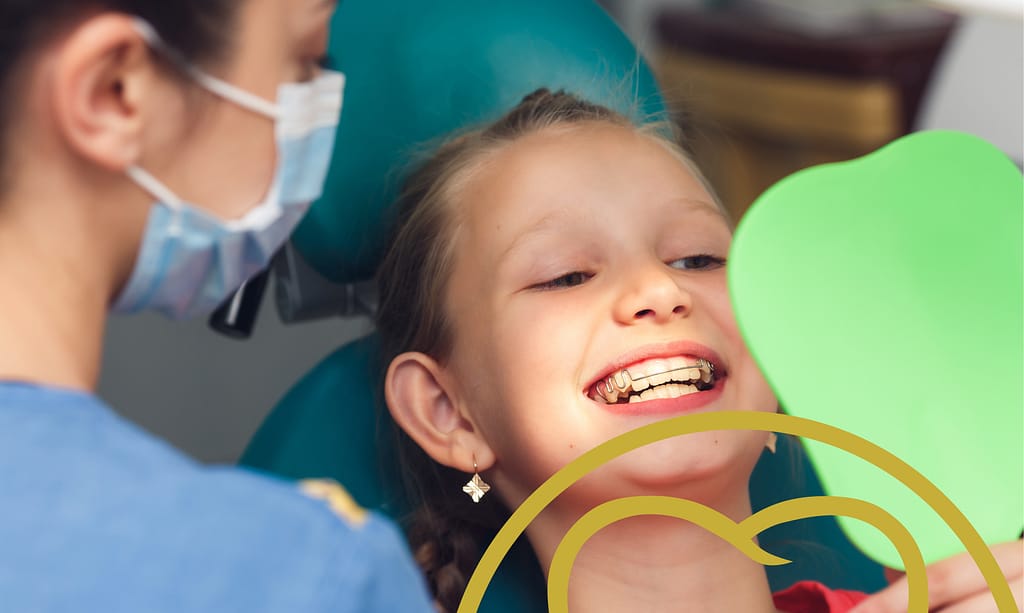Starting Young: Why Timely Orthodontic Evaluation Matters for Your Child

When it comes to your child’s orthodontic treatment, timing is crucial.
It’s an exciting time when your child’s first teeth come in, and then fall out to make way for their adult teeth. All those loose teeth being wobbled and visits from the tooth fairy. During this time, it’s important for your child’s dentist to keep an eye on their developing teeth, which is why children should undergo an early orthodontic evaluation to assess the development of their teeth and jaws.
This allows the orthodontist to identify and address any potential issues at an early stage. Early intervention can help guide proper tooth alignment, jaw growth, and overall oral development. It may prevent more serious problems from developing in the future, leading to a healthier and more aligned smile. Additionally, early orthodontic evaluations enable orthodontists to create personalized treatment plans tailored to each child’s unique needs.
The American Association of Orthodontists (AAO) recommends that children have their first check-up with an orthodontist either when an orthodontic problem is noticed, or by the time they reach seven years old. At seven years old, a sufficient number of your child’s adult teeth have emerged, enabling dentists to anticipate the eruption pattern of their remaining adult teeth. This includes forecasting potential orthodontic concerns, such as overcrowding or overbites.
This proactive approach not only ensures a well-aligned smile, but also contributes to the prevention of more complex (and costly) dental problems in the future, setting the stage for a lifetime of optimal dental well-being.
What orthodontists look for.
During a child’s orthodontic evaluation, orthodontists carefully assess various factors, such as how their teeth fit together, and whether there is any crookedness or misalignment. They also assess the need for interventions, such as braces for kids, Invisalign, or traditional braces. The orthodontist also pays attention to any signs that your child may require appliances like palatal expanders or space maintainers.
Additionally, they may evaluate the palate’s width, considering interventions for a narrow palate. This thorough evaluation by an experienced orthodontist ensures comprehensive care tailored to your child’s specific orthodontic needs.
Sometimes, the orthodontist may take X-rays to see what’s happening inside their mouth. This helps the orthodontist figure out the best way to keep your child’s smile super healthy and happy, and gives them further insight into the progression of their teeth eruption.
Identifying orthodontic issues such as crowding, misalignment, and bite problems is of paramount importance. Early recognition allows for timely intervention, preventing potential complications and promoting optimal oral health. Addressing these concerns in the initial stages ensures a smoother orthodontic journey and contributes to the overall well-being of the patient.
How early orthodontic treatment can make a difference.
Early treatment for certain orthodontic issues, such as overcrowding, is crucial. It can prevent more invasive procedures in the future, such as tooth extractions, and reduce the severity and duration of treatments, such as braces or clear aligners. This proactive approach aids in the straight and healthy eruption of your child’s teeth, lowering the risk of long-term oral health issues, like cavities or gum disease.
While not every child requires early orthodontic intervention, it does offer better long-term outcomes when needed. Identifying issues early provides essential information for immediate treatment or future orthodontic planning, making an early orthodontic evaluation beneficial—even if immediate treatment is not required.
Postponing your child’s orthodontic evaluation until their teens allows preventable issues to worsen. For instance, overcrowding can be effectively addressed with palatal expanders in your child’s early years. If evaluation is postponed until the teen years, it might be too late for certain treatments, like using a palatal expander, as bone plates may have already fused. In such cases, more invasive procedures, like extracting healthy teeth, become necessary.
Scheduling an orthodontic evaluation in the teenage years may inadvertently lead to missed opportunities for less invasive, more comfortable, and better long-term oral health treatments.
Steps to take for timely orthodontic evaluation.
Tackling orthodontic concerns in childhood offers numerous long-term benefits for oral health and overall well-being. Early intervention enables orthodontists to guide teeth alignment and jaw development, minimizing the risk of complex issues. Addressing misalignments, overcrowding, or bite irregularities in childhood often results in more efficient outcomes, leading to a well-aligned smile, improved facial aesthetics, and enhanced self-esteem.
Additionally, early intervention may prevent the escalation of dental problems, reducing the need for extensive treatments in adulthood and promoting a lifetime of optimal oral health.
Choosing the right dental practice is crucial for you and your family. You want assurance that the team is dedicated to offering top-notch treatment options and personalized care. Opting for a dental practice that provides comprehensive orthodontic solutions signals a commitment to excellence. Having an orthodontist on board showcases an extra level of dedication to diverse treatment options, indicating a holistic approach to care. By selecting a practice with in-house orthodontics, you’re ensuring long-term support for all your family’s needs.
Dixon, Boles & Associates is your go-to destination for comprehensive dentistry and orthodontics in Wilson, NC. Schedule your child’s early orthodontic evaluation appointment now to discover the benefits Dixon, Boles & Associates can bring to your family’s oral health.